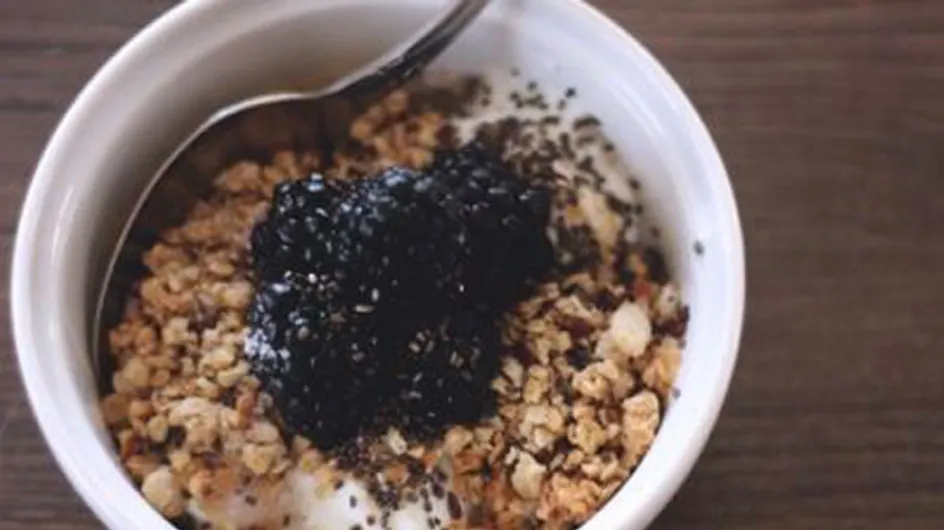When it comes to nutrients, fibre has a multitude of benefits but it's often something that we don't get enough of.
To find out how we can boost our fibre intake we spoke to NYC-based Registered Dietician Megan Wolf.
"It is recommended that women eat at least 25g of fiber a day," Megan says. "But, many people don't get nearly enough fibre. It helps us to feel fuller for longer on less food. In other words, we want to eat it!"
Fibre is vital to help with blood sugar control, heart health, skin health and can even help with IBS and weight loss. From keeping your digestion steady and stopping you from feeling hungry to helping to slow your body's absorption of sugar, fibre is fabulous in more ways than one, and integrating it into your diet should give you visible results.
Whether you're struggling with bowel issues (read constipation), hunger pangs, nausea, tiredness and weight gain, integrating fibre to your diet can certainly make an impact. Get ready to feel less hungry, more energetic and more balanced.
Megan's tips on how to add more fibre to your diet are, "simple, small changes that can add up to big health improvements."
Bring it on!
Kick your day off with fibre
"Start your day with fibre. Breakfast is an easy meal to help you meet your fibre goals," Megan suggests.
If you kick your day off with a hefty dose of fibre, not only will you feel great throughout the day, you'll likely make better food choices come lunch, dinner, and snack times.
"Whole grain cereals and oatmeal are packed with filling fibre," Megan says. "Or, top yogurt with ground flaxseeds, chia seeds or wheat germ."
Whole grains
You've probably heard this 100 times before, but it bears repeating. "Choose whole grains whenever possible. The more refined and processed a grain is, the less fibre there is. Opt for unprocessed grains," Megan says.
Many of us are used to the white flour foods we grew up with: white rice, white pasta, white bread. The good news is that these foods now have counterparts that are fibre-rich, and they can taste just as good, too. Megan suggests trying 100% whole wheat bread, brown rice tortillas, whole wheat couscous, black rice, and whole wheat pasta.
Small changes can lead to big results. If you make pasta at home often, switch to a whole wheat variation. The fibre will help you feel fuller faster, meaning you can eat a smaller portion and feel just as satisfied.
Fruits and veggies
"Snack on fruits and vegetables," Megan recommends. "Fruits and vegetables are some of the best sources of fibre, so be sure to include them in your everyday diet."
If you're not a big snacker, we suggest adding fruits to your breakfast, veggies to your dinner, and either - or both - for lunch! Fruit and vegetables allow you to eat more and feel fuller, without tacking many calories onto your everyday diet.
Not sure where to start? Try adding a side of fresh berries to your morning meal. A leafy green salad is a great companion to your lunch or dinner. Spinach leaves will leave you feeling especially full, and are delicious on their own with a drizzle of light dressing. Does your sweet tooth hit in the evening? Have a pear after dinner for a sweet, fibrous treat.
Megan's favorite fibre rich fruits are raspberries, strawberries, blueberries, and apples. The veggies she raves about are carrots, broccoli, and bell peppers. We also love pears, avocados, eggplant, mushrooms, spinach, and sweet potatoes. See - we told you it was easier than you thought to find fibre!
Skin is in
When it comes to apples, potatoes, and eggplants, "Try leaving the skin on," Megan says. "So many vitamin, minerals and nutrients are trapped right under the skin of most fruits and vegetables. Plus there’s fibre. Whenever you can, don’t peel it!" (Even if it does look pretty!)
An apple is one of easiest, most portable snacks there is. Buy 'em in bulk at the market, and toss one (that you've already washed) into your handbag each day, so you're never without a little fuel. If biting into the skin isn't your thing, slice it up first.
Apples in particular are wonderful because they contain pectin, which helps your digestive system along, as well as cancer-fighting phytonutrients.
More of a potato gal? Try slicing up a sweet potato - skin on - and tossing with a little olive oil, salt and pepper, and paprika. Bake for 15-20 minutes, turning occasionally.
Beans, seeds, and nuts
"Bulk dishes up with beans, seeds and nuts," Megan suggests. Some of her favorites are lentils, chickpeas, black beans, pumpkin seeds, peanuts, walnuts, and almonds.
Some people can't get past the gritty, tough texture of nuts. If you're one of them, opt for smooth almond butter for the same great benefits. Love Mexican food? Add a hefty dose of black beans to your next whole wheat burrito.
"While this doesn’t come calorie free, it will certainly add more nutrition in the form of healthy fats, protein and fibre. Just watch your portions."
See that wasn't so hard? Just a few easy food swaps and you've got yourself well on the way to a fibre-friendly diet.
How will you add more fibre to your diet? What's your favorite fibre-rich food? Tweet us @sofeminineUK



















